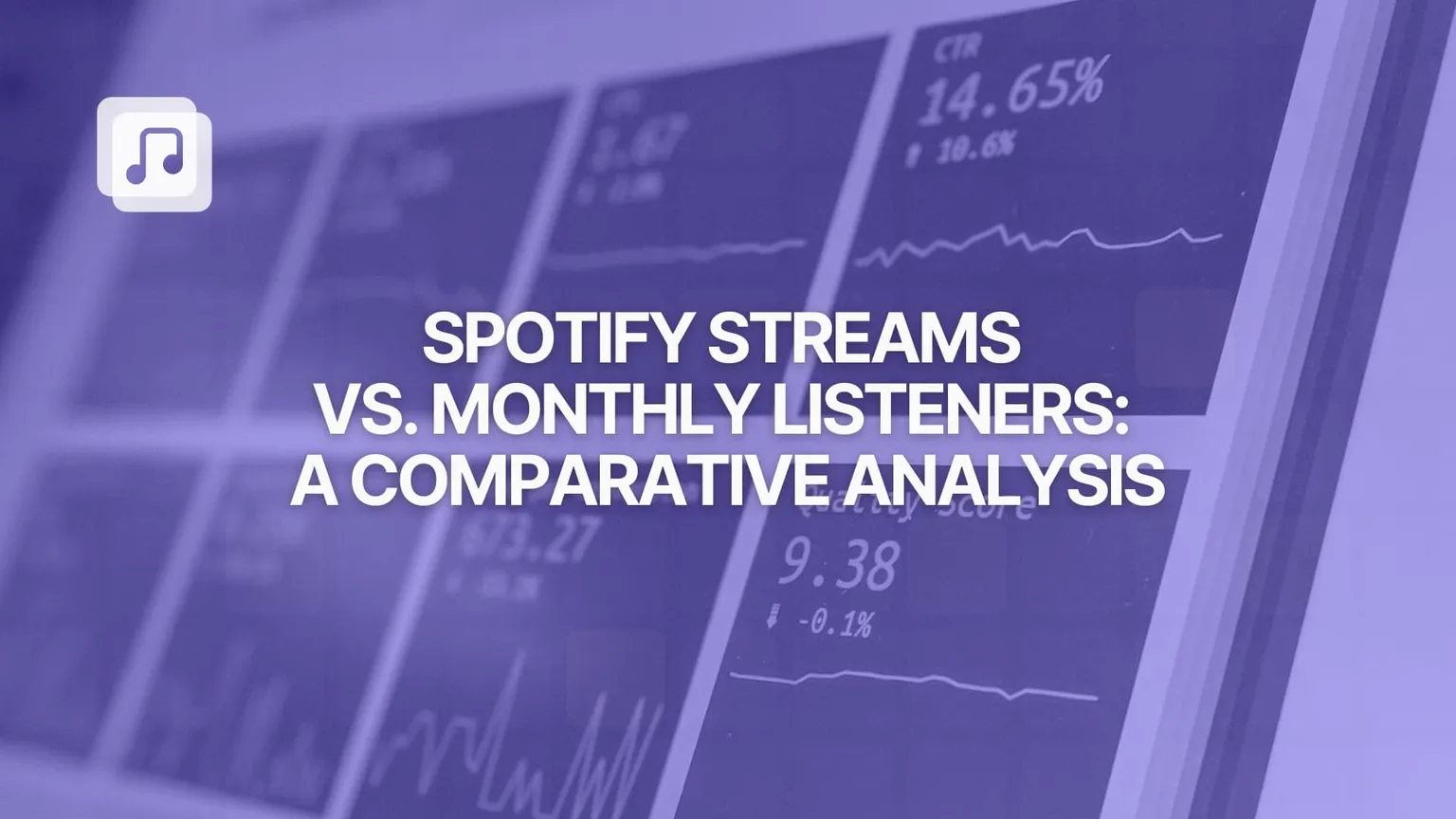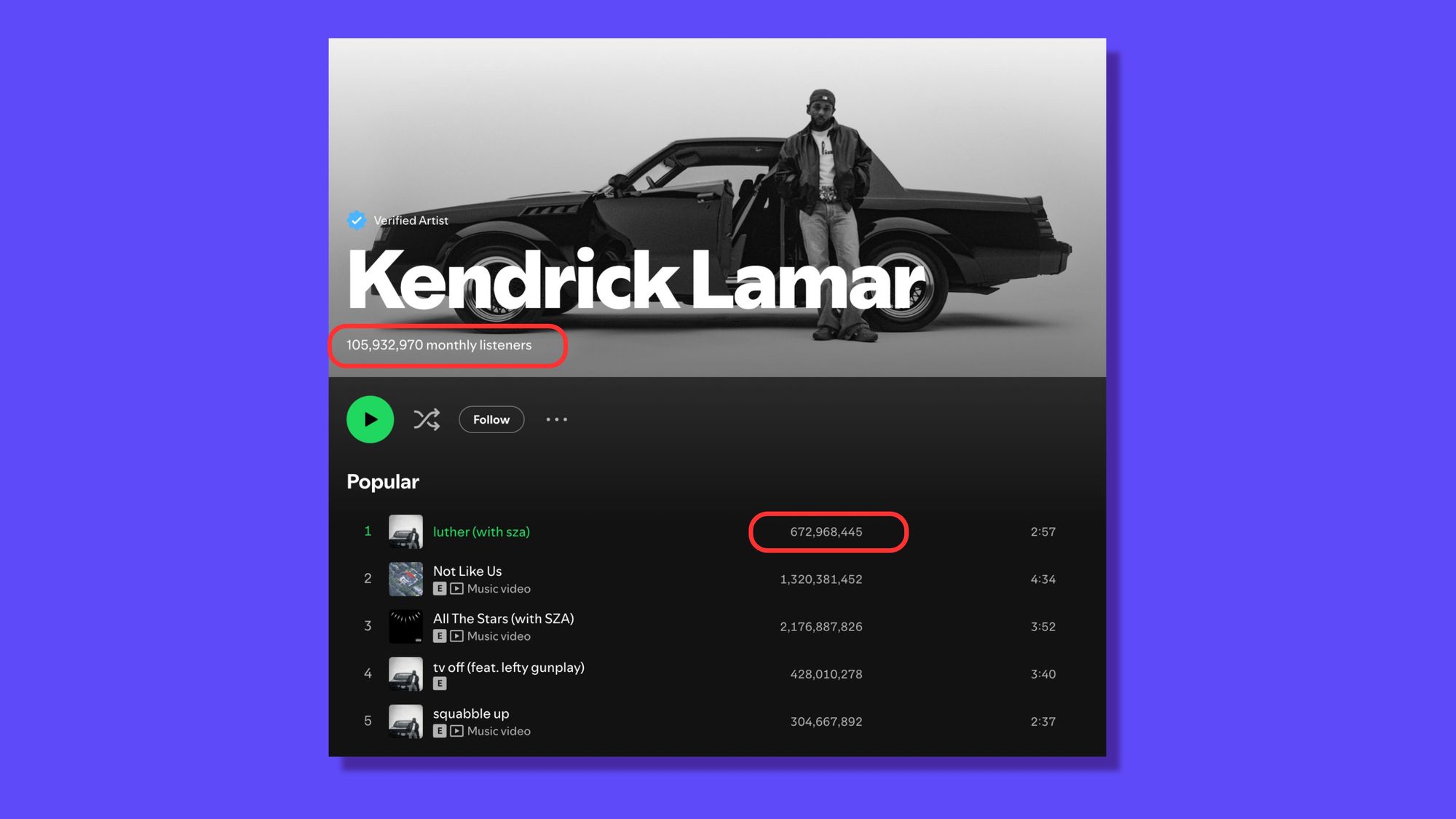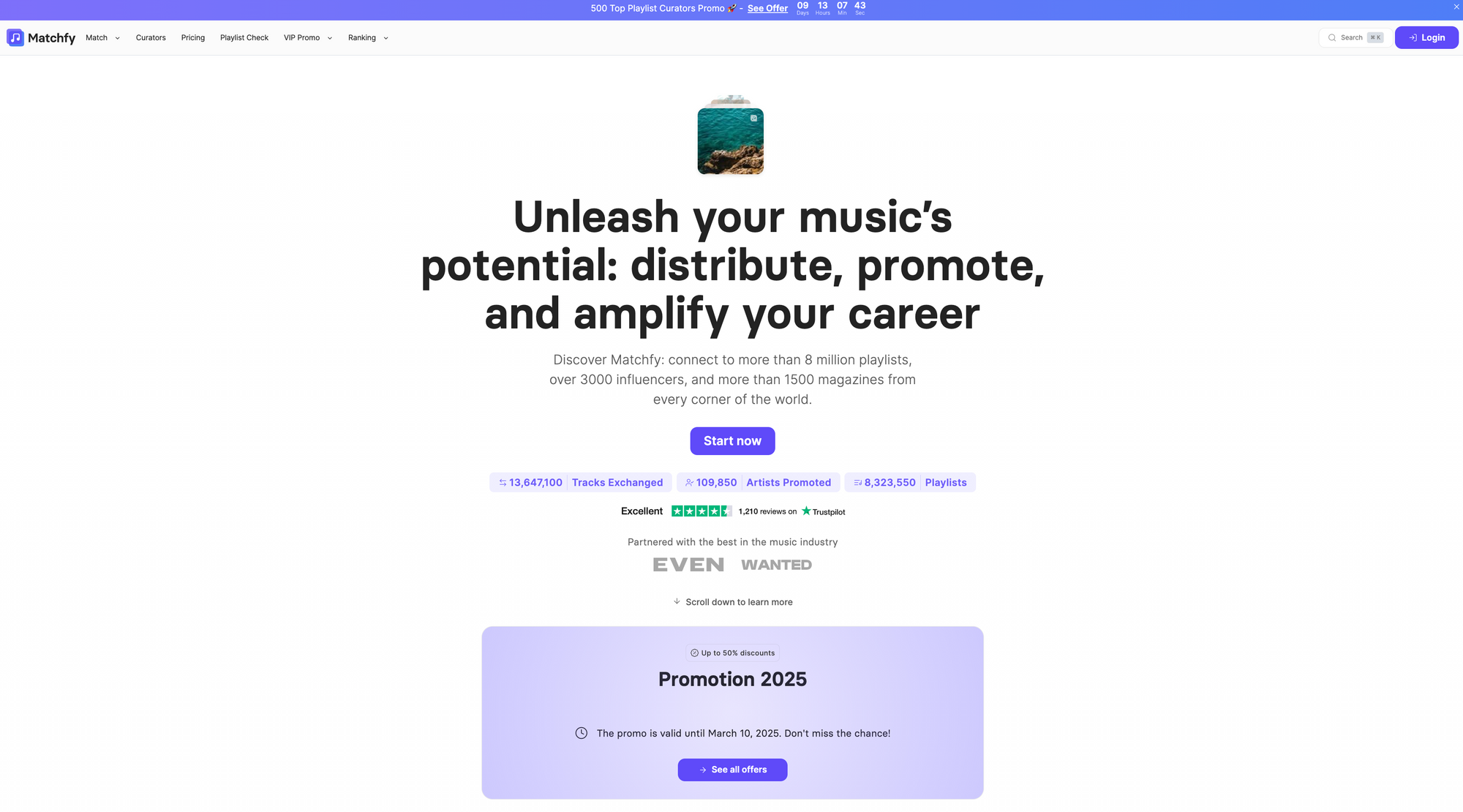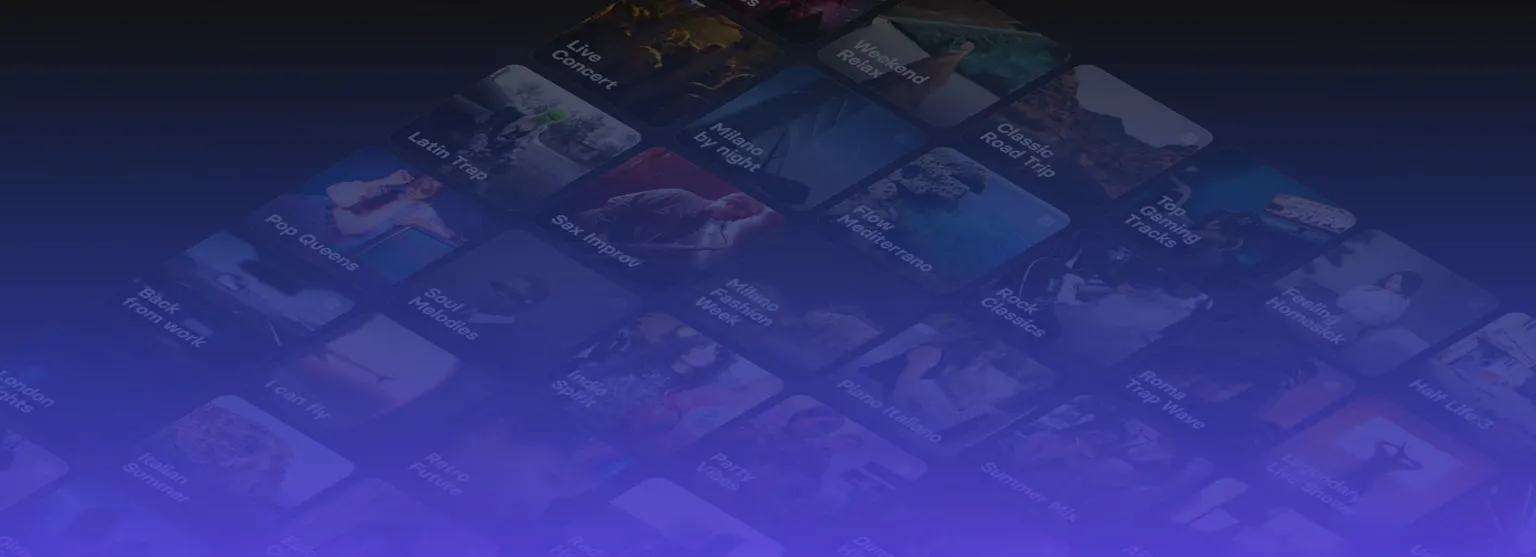
Understanding Spotify analytics can unlock the key to growing your music career. For artists, two metrics stand out: Spotify streams and monthly listeners. While they might seem similar, they measure different aspects of your audience engagement and popularity.
In this guide, we’ll break down the differences between Spotify streams and monthly listeners, explain how they’re calculated, and show you why both matter for boosting your presence on Spotify.
Here's what we're going to explain:
- What are Spotify Streams?
- What are monthly listeners on Spotify?
- Streams vs. Monthly Listeners: the core difference

What are Spotify Streams?
A Spotify stream counts every time a song is played for at least 30 seconds. Whether it’s from a playlist, an album, or a direct search, each play adds to your total stream count. Here’s what you need to know:
- Streams reflect total plays: if one fan listens to your track 10 times, that’s 10 streams.
- No unique listener focus: streams don’t care who’s listening—just how often.
- Revenue tie-in: streams directly impact your earnings, with Spotify paying roughly $0.003-$0.005 per stream (as of 2025 estimates).
For example, if your song gets 1,000 streams in a month, it shows how much your music is being consumed, but not how many unique fans you’re reaching.
Are you interested in these topics and want to know more about the music industry? Check out our blog!
What are monthly listeners on Spotify?
Monthly listeners track the number of unique individuals who’ve streamed your music in the past 28 days. This metric highlights your audience size rather than total plays. Key points include:
- Unique listeners only: if one person streams your songs 50 times, they still count as one monthly listener.
- Broader reach indicator: it shows how many people are discovering or returning to your music.
- Fluctuates daily: your monthly listener count updates based on activity within that 28-day window.
So, if you have 500 monthly listeners, it means 500 distinct users engaged with your tracks—regardless of how many times they listened.
Streams vs. Monthly Listeners: the core difference
The main distinction lies in quantity vs. audience size. Streams measure total consumption (how often your music is played), while monthly listeners measure reach (how many unique fans you have). For instance:
- High streams, low monthly listeners: one dedicated fan could stream your song 1,000 times, but your listener count stays at 1.
- High monthly listeners, low streams: if 1,000 people stream your track once each, you’d have 1,000 listeners but only 1,000 streams.
Both scenarios tell different stories about your Spotify growth.

Why these metrics matter for artists
Mastering Spotify streams and monthly listeners can shape your strategy to grow your Spotify audience:
- Streams drive royalties: more plays mean more income, making streams crucial for financial success.
- Monthly listeners boost visibility: a higher listener count signals popularity, helping you land on algorithmic playlists like Release Radar or Discover Weekly.
- Balanced growth: ideally, you want both metrics to rise—high streams for revenue and high listeners for exposure.
For example, getting featured on a popular playlist might spike your monthly listeners, while a viral hit could skyrocket your streams.
A key strategy to boost both Spotify streams and monthly listeners is getting your music featured on playlists.
With Matchfy, independent artists can connect with curators and land placements in multiple playlists, significantly increasing their exposure. Being included in curated playlists means your tracks reach more listeners, resulting in higher engagement, more streams, and an expanding fanbase.
The more your music circulates through playlists, the better your chances of triggering Spotify’s algorithm to recommend your songs to an even wider audience.
If you're looking for a way to grow your presence on Spotify, Matchfy.io is an essential tool to help you achieve it.

How Spotify calculates these numbers
Spotify uses a rolling 28-day period for monthly listeners, counting each unique user once, no matter how many songs or plays they rack up. Streams, however, tally every qualifying play (over 30 seconds) with no cap. Key factors affecting both include:
- Playlist placements: editorial or user-curated playlists can boost both metrics.
- Fan behavior: repeat listeners increase streams, while new fans grow monthly listeners.
- Song releases: fresh tracks often attract more listeners and plays.
Tips to increase streams and Monthly Listeners
Want to boost Spotify streams and grow monthly listeners? Try these proven tactics:
- Pitch to playlists: Submit your tracks to Spotify playlist curators at least 7 days before release via Spotify for Artists.
- Engage on social media: share your Spotify links on TikTok, Instagram, or X to drive traffic.
- Release consistently: frequent drops keep listeners coming back and streaming.
- Collaborate with artists: features can expose your music to new audiences.
Wrap-Up
To thrive on Spotify in 2025, monitor both streams and monthly listeners. Streams fuel your royalties, while monthly listeners expand your fanbase and algorithmic potential.
One of the most effective ways to achieve this is through playlist placements, and that’s where Matchfy comes in.
Why don't you try it yourself? Start sending your music with endless submissions now!

